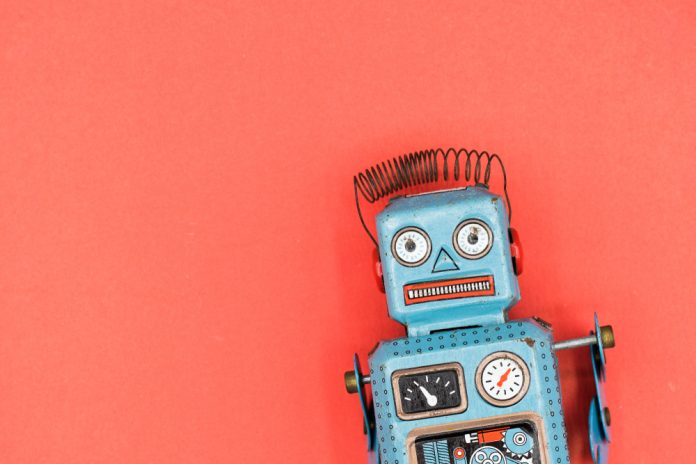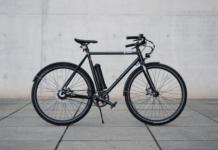If you have ever attempted to draw the line between sci-fi and reality, you may be hard-pressed to achieve those ends as time goes on. What 2018 has shown us is that technological progress – not necessarily improvement, rather a forward trajectory of travel – is inevitable. Despite warnings from reputable individuals such as the Elon Musk and the late Professor Stephen Hawking, AI continues to be at the forefront of nigh-on dystopian tech trends for 2018.
This technology has included everything from NASA probes and rover equipment, automated vehicles and now even home appliances and personal technology. This article will attempt to give a run-through of just a few examples of new technology that can be used in everyday life – either designed to make everyday functions easier or provide capabilities that were once thought impossible.
Temi Robot
The most pertinent and perhaps intriguing example of personal AI technology thus far in 2018 is the Temi Personal Robot. The home robot uses enhanced AI, sensors, cameras and motor functions to act as a mobile piece of smart technology. The bot is able to; perform phone and video calls, play music, act as a home hub for your devices and appliances, is able to be used for gaming, streaming TV and films, provide basic or advanced maths and language tuition, snap photos and videos, provide news and memo updates, it has a smart tray that can carry items and charge phones, it can provide healthcare advice or call emergency services, can follow users around the house and even pre-load locations around the house and travel to them at the request of the owner. In essence, the bot is able to perform the functions of the most up-to-date smart phone or Amazon Echo, but has motor functions and the ability to move its screen and cameras towards subjects like a human face would. Temi can be activated at any location around the world via the owner’s account, through the Temi app. This means that, as displayed on the Temi website, a user could log into their Temi on one side of the globe, video call their home on the other side of the world, and drive the bot to a room where their family are relaxing, then talk face-to-face with family members as if they had just walked through the front door.
Roboteam have said that they are “committed to a robotic future that empowers and enhances human abilities, to enrich human experiences and deliver intuitive, reliable and fun products usable by all”.
The firm said the Temi bot represents, “The most advanced technology for the most intuitive human interactions – Temi is the first robot that truly interacts with humans while providing flawless autonomous navigation, dynamic video and audio experiences and advanced AI.”
The bot is currently available for pre-order at $1500, and is the latest creation of Roboteam, a firm with roots in military bomb disposal technology. The first 1000 Tem bots will be rolled out for household field-testing in November, with the move marking a paradigm shift for the role of AI technology. Not only does the bot perform human functions and have motor functions, but also has the ability to interact, learn and is ultimately autonomous within the confines of its programming. This three foot bot is perhaps one of the first domestic examples of AI being used to provide non-human capabilities alongside human qualities such as movement and autonomy.
Vue Smart Glasses
The Vue Smart Glasses are the first tech-based glasses to combine prescription lenses with Bluetooth and AI technology. This wearable piece of tech is designed to combine and replace your Fit Bit, prescription glasses and headphones, and works alongside your mobile phone so that you don’t even need to take it out of your pocket or bag. The side of the frames have a touch pad which has customisable controls, which allow a user to; listen to music, hear navigational instructions, answer calls, count your steps, listen to memos and read out text messages.
Alongside the glasses’ touch pad technology is the piece de la resistance, its bone conductor audio. The not-yet patented technology allows the legs of the glasses frame to pass sound through your skin, by conducting sound waves through your temporal plate and into your ear canal, without having to actually put anything inside your ear. This gives a wearer the ability to discreetly listen to memos whilst in a meeting, or safely listen to music while crossing a road – the wearer can still hear peripheral sounds while no sound is leaked from the bone conductor audio.
In addition to glasses’ capabilities that it shares with mobile phones, it has six infrared, proximity and gyroscopic sensors, which Vue have equipped with safety capabilities. Among these are driving safety and focus measures – should the glasses detect the wearer drifting their gaze to the side or downward, it will trigger an audio and LED light response designed to help the wearer regain focus on the road.
Digital Trends described a trial model of the glasses as, “The smart glasses we always wanted.”
“A pair of stylish smart glasses you’ll actually want to wear”, said Wareable.
The glasses have a three day working battery life and can be recharged in their wireless portable carry case, the case is charged from the mains using a charging cable. The glasses are available to pre-order for $249.99, with Vue having collected almost $4 million via crowdfunding thus far, the firm are awaiting patent approval for their bone conductor audio technology.
Mystic
Finally, the Airlango Mystic promises to use AI technology to bring consumers the most high-spec UAV to date. Aside from the multitude of advanced AI features, the drone already has an impressive list of specifications. It runs with 4k, 30 fps video and photographic capabilities, with a 12 megapixel camera, a 32GB memory, digital image stabilization, fast and smart charging, 720p real-time video transmission, a range of up to 800m with a range extender and the ability to hover, take-off and land automatically. Alongside these impressive capabilities and ‘Normal Setting’, the Mystic is covered in a network of sensors that enable its AI hardware to execute its 3D Tracking, Safari, Gesture Control and Template Photo and Video modes.
The 3D Tracking allows the Mystic to follow its owner at a desired height and distance and record video without the owner having to intervene in any way. The drone will wander autonomously and capture different angles, but making sure to keep its subject at the centre of its focus.
Safari is perhaps the mode which tests the limits of AI autonomy. Here, the UAV flies freely within its range limit, using its AI to photograph recognised people and identify desired targets – such as buildings or views – to photograph automatically.
With the fastest response time to date, the Mystic leads the way in robotic gesture control. The drone can follow commands for six gestures, including change distance, record video or change mode.
Finally, the Template mode provides different setting for video recording and photographing subjects. Using its sensors, the Temporal Video mode identifies its owner and takes a panoramic video of its subject by panning round the target area at a set distance. The Template Photo mode identifies its subject and either pans in to capture the individual in a photo, or if the subject should be interacting with other individuals or a group, it automatically pans out to capture all of the subjects in action.
Airlango have told us to, “Expect to experience the real potential of an artificially intelligent drone that outshines the rest in the crowd.”
The Mystic weighs less than half a kilo and can fold into the palm of its owner’s hand. The UAV is available to pre-order on Kickstarter for its retail price of $599, though it is currently available with an early-bird offer of almost 25% off, with the drone currently retailing at $459. Airlango have a provisional release target of November 2018, and have currently raised over $88,000 on their Kickstarter, which began with a $30,000 target.
Closing Thoughts
The worry with AI is that it gives robotics autonomy. Robotic and computer-based equipment have different capabilities to humans, but giving this technology artificial intelligence capabilities allows it to become aware of its surroundings, and make judgments based on those surroundings. Thus, AI enables a degree of autonomy which gives appliances and machinery the closest thing we have ever seen to human characteristics.
While the idea of robotics developing their own consciousness is definitely a long-shot, two things should be taken from the development of technologies such as the ones described above. Firstly, we forget how quickly we have come from the days where sci-fi writers fantasised about the technology which will soon be our reality. Some of us are guilty of being nonchalant about AI advancement. The absence of flying cars does not give us a mandate to be ignorant about the even more nuanced technology that we are already developing. It has taken a matter of years for these ideas to go form concepts and macro-scale projects to being used in the domestic sphere, which demonstrates how wide the potential of AI is, and the ease with which such technology could grow and expand on a global scale.
Secondly, not only has AI come about quickly, but we forget about how widely its capabilities have expanded. From being used alongside sensors to provide single functions, robots such as Temi illustrate a desire in the tech community to endow AI-enabled robots and devices with a broad range of abilities. At the moment, we have only gone as far as to give a robot motor abilities, speech functions and the abilities of pre-existing technologies. However, it will be a very quick process to give future models a wider range of capabilities and functions that could potentially allow them to carry out more high-skilled tasks, that have traditionally relied on human judgement.
While debates exist that highlight how the capabilities of tech and AI could make humans lazy, I think such concerns are secondary to those highlighted by Elon Musk, Professor Hawking and Bill Gates. AI is only confined by the limits of our imagination, and should thus be used alongside strict regulation and caution going forwards.




